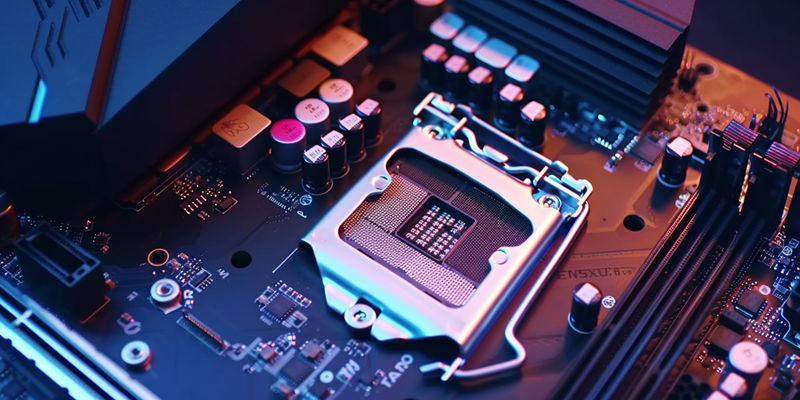The unveiling of AMD’s Ryzen 9000 Desktop CPU series based on Zen 5 core architecture marks a significant stride in the realm of high-performance gaming PCs. With notable enhancements in speed, efficiency, and processing capabilities over its predecessor, the Zen 4, the Ryzen 9000 series stands poised to transform the landscape of gaming and productivity workstations.
Unveiling Zen 5: A Leap in CPU Technology
Engineering and Performance Gains
AMD’s latest innovation, the Zen 5 core architecture, represents a remarkable leap forward in processing power and efficiency. Compared to the previous Zen 4 architecture, Zen 5 boasts an average 16% improvement in instructions per cycle (IPC). This jump is the result of intricate engineering efforts leading to better branch prediction accuracy and a more robust infrastructure for computing tasks. Higher throughput, courtesy of wider pipelines and vectors, underpins the architecture, allowing for more data to be processed simultaneously.
Increased parallelism is another key improvement. A larger window size in the Zen 5 CPUs facilitates the processing of multiple instructions simultaneously, enhancing speed for demanding applications and games. The quantitative gains in performance exemplified by the Zen 5 architecture establish a new benchmark for desktop CPUs, suggesting a tangible shift toward more fluid and responsive computing experiences.
Architectural Enhancements and Process Technology
Packing more power into the same space comes down to AMD’s craftsmanship in architectural design and manufacturing processes. The Ryzen 9000 series leverages TSMC’s advanced 4nm process for the core chiplet dies (CCDs), while the input/output die (IOD) benefits from the 6nm process. This thoughtful engineering maximizes performance while maintaining energy efficiency.
The series is built upon a foundation consisting of two CCDs and one IOD, mirroring the Zen 4’s structure but with significant enhancements. Instruction bandwidth has doubled, along with improvements in L2 to L1 data bandwidth and a 2x increase in AI performance and AVX-512 throughput. These refinements in the architecture have a direct impact on the CPUs’ capability to handle complex tasks and high-quality graphics without compromising the execution of daily computing operations.
The Ryzen 9000 Series Lineup
High-performance at Every Level
The Ryzen 9000 family caters to a variety of performance needs across its lineup. From the flagship 16-core Ryzen 9 9950X to the 6-core Ryzen 5 9600X, users can expect a boost in clock speeds and a rigorous focus on efficiency. The 16-core powerhouse retains the same clock speed of up to 5.7 GHz seen in the previous generation’s equivalent but effectively manages a 170W thermal design power (TDP). The remaining models feature optimized TDPs and increased clock speeds; for instance, the Ryzen 7 and 5 models have been scaled down to a 65W TDP.
This diversification ensures that AMD can offer cutting-edge performance for hardcore gamers and content creators while also catering to those seeking more energy-efficient yet robust computing solutions. The precision in balancing power consumption and processing capabilities resonates with the evolving demands of modern PC users.
A Battle of the Flagships: Ryzen 9 9950X vs. Intel Core i9
When the curtains rise on the battle of the titans, the Ryzen 9 9950X stands firm against Intel’s Core i9-13900K. AMD’s flagship model leads the charge with performance that is up to 56% superior in productivity tasks and a 23% edge in gaming. This victory is largely attributed to the architectural enhancements of Zen 5, including reduced latencies and a more streamlined cache design. The Ryzen 9 9950X demonstrates how calculated improvements in architecture translate to substantial real-world performance gains.
Not to be understated, memory support further tilts the scales in AMD’s favor. With higher EXPO/XMP memory support and native DDR5-5600 support, the Ryzen CPUs are more than ready to exploit the fast-paced advancements in gaming configurations. They push the envelope, allowing enthusiasts to extract every ounce of performance from their systems, setting a new standard for what we can expect from mainstream CPUs.
Embracing the Future of Gaming and Creation
Enhancing the Gaming Experience
What sets the Ryzen 9000 series apart in the gaming sphere is not just raw performance; it’s the suite of enhancements meticulously implemented. Gamers can delight in lower latencies and an overhauled cache structure that contribute to smoother gameplay. The support for EXPO/XMP brings high-speed DDR5 memory into play, effortlessly allowing games to run at the desired frames per second without bottlenecking system performance.
The Ultimate Platform for Content Creators
For content creators, the Ryzen 9000 series arrives as a herald of the ultimate AI and graphics platform. Boasting a 100% increase in graphics bandwidth, thanks to dedicated PCIe 5.0 lanes, and a significant acceleration in AI-driven tasks, these processors are poised to revolutionize content creation. While they may lack a dedicated neural processing unit (NPU), the Ryzen 9000 CPUs nonetheless wield substantial AI performance superiority.
Positioning in the Market and Consumer Impact
A Competitive Landscape
July’s arrival of the Ryzen 9000 series marks the dawn of a new competitive landscape. AMD’s latest offerings are expected to challenge Intel’s dominance in the high-performance CPU domain unabashedly. With the performance metrics showcased, it’s clear that a storm is clouding over the current champions, threatening to reshape the high-performance segment.
Pricing and the AM5 Ecosystem
AMD’s introduction of the Ryzen 9000 Desktop CPU series, built on the advanced Zen 5 core architecture, represents a pivotal advancement for enthusiasts and professionals in the high-performance computing community. These CPUs are specifically engineered to deliver marked improvements in speed, power efficiency, and overall processing prowess compared to their Zen 4 forerunners. The Ryzen 9000 series is set to reshape the experience of gamers and professionals alike, offering superior capabilities that promise to make gaming more immersive and productivity applications run more smoothly than ever before. This leap in technology illustrates AMD’s ongoing commitment to innovation and its impact on the future of desktop computing. As this series enters the market, it’s expected to raise the bar for what users demand from their gaming rigs and workstations, signifying a new era of performance and reliability that could redefine industry standards.

